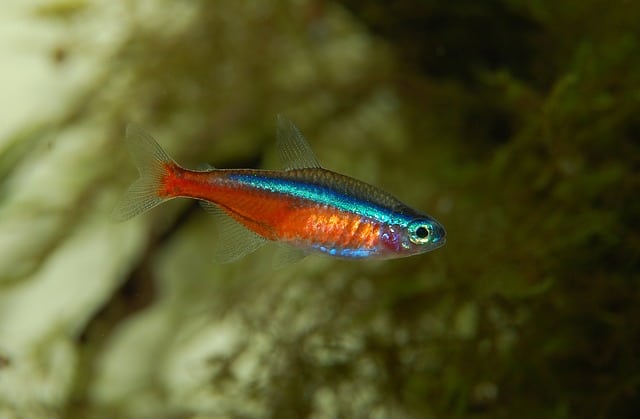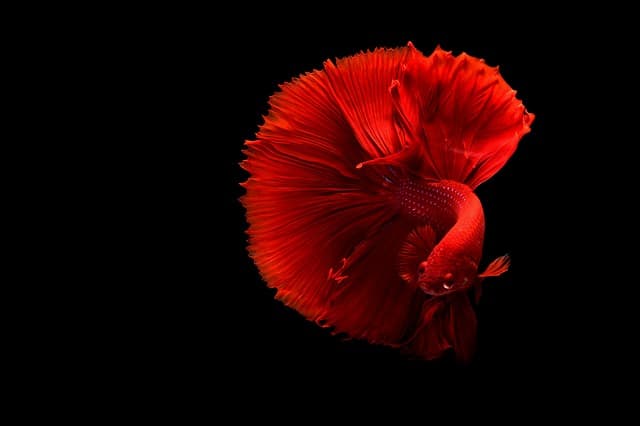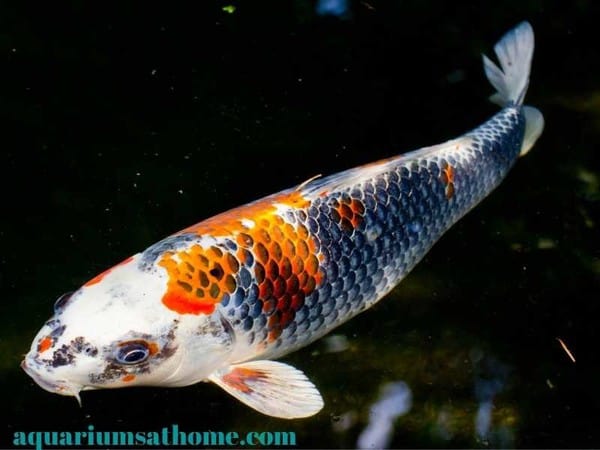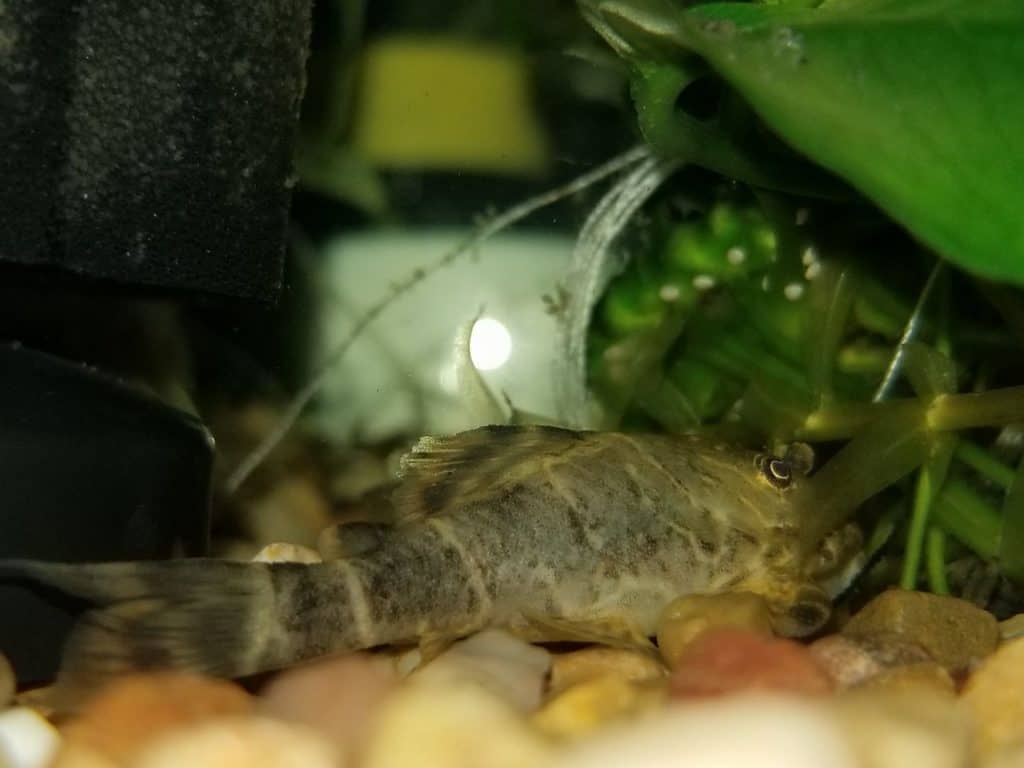Jack Dempsey cichlids are a type of freshwater fish found primarily in the warm, murky, slow-moving rivers from Mexico to Honduras. Their ample size, vibrant coloring, and active nature make them unique among cichlids and a favorite choice for intermediate to advanced aquarium hobbyists. Beautiful and a joy to observe, they’re also an aggressive species that can become hostile and territorial in an unsuitable community tank environment.
This article will outline all you need to know as a freshwater aquarist about basic Jack Dempsey fish care. I’ll also explain how big of a tank they require and how to set it up; what water conditions they need; what food they prefer; how long they live and how big they get; what their temperament is like and how they behave; how they reproduce; what species make the best tankmates; and what (if any) diseases they’re prone to.
So, if you’re ready to learn all you need to know about keeping, breeding, and raising Jack Dempsey fish in captivity, then let’s ‘dive deeper’ into the aquatic world of this boisterous, rugged, and attractive Central American cichlid…
Jack Dempsey Fish Overview
Appearance: varying in shades (purple, blue, green, gray, brown)
Behavior: aggressive
Breeding: egg layers
Care level: intermediate to advanced
Diet: carnivore
Family: Cichlidae
Lifespan: 8-10 years
Origin: murky, slow-moving river systems in Central America
Size: 10-15 inches
Tank size: 55-gallon for a single fish
Tank setup: brackish to tropical freshwater
Jack Dempsey Fish Natural Habitat
Jack Dempsey cichlids are found naturally in murky freshwater canals, lakes, bogs, or swamps. Slow moving, muddy rivers in southern Mexico is their main place of origin. In the wild, they spend most of their time digging in the sandy substrate in search of food. They prefer warmer, tropical climates with low light and slightly acidic waters.
Jack Dempsey Fish Appearance and Size
Jack Dempsey cichlids got their name from their strong facial features and aggressive nature, much like that of the famous 1920’s boxer, William Harrison ‘Jack’ Dempsey. They’re also characterized by their large, oval-shaped body and long fins. Since they’re carnivorous by nature, they have large mouths with sharp teeth.
They range in color from gray to purple to brown. Their scales appear to be shiny and green with streaks of gold and/or blue. Jack Dempsey cichlids get to be quite big with a heavy girth. They range in size from 10 to 15 inches with the males growing larger than the females at a rate of 3 to 6 inches per year. The electric blue variety displays shades of iridescent blue and green with grey or black spots.
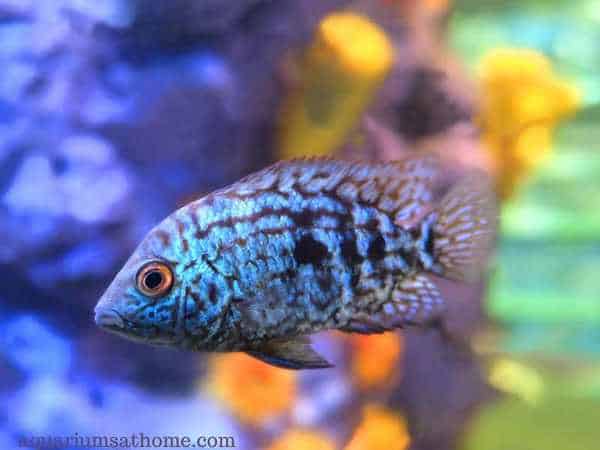
Jack Dempsey Fish Behavior and Temperament
Jack Dempsey cichlids are considered aggressive in nature, especially when kept in an overcrowded aquarium with smaller, timid tankmates. However, when housed in a large tank with plenty of hiding places and enough space to claim an area as their own, they can be quite peaceful in a community environment with fish of like size and temperament.
Jack Dempsey Fish Diet and Feeding
Jack Dempsey fish are a type of cichlid and therefore, carnivorous by nature. In the wild, their diet consists of almost any meaty edible that can easily fit into their mouths. Crustaceans, insects, worms, and small fish are all on the menu. They’ll typically dig in the murky, muddy riverbed to unearth potential prey hiding within the substrate.
In captivity, there’re many different foods you can offer them. They’re not picky and have big appetites. A diverse diet of both plant- and meat-based foods is best. Protein-rich options like bloodworms and brine shrimp, greens like kale, lettuce, and spinach, and high-quality pellet foods are all acceptable. As a treat, you can give them the occasional cricket or grasshopper to munch on.
Regarding a feeding schedule, offer juvenile Jack Dempsey fish 2 to 3 small meals per day. Full-grown fish should be fed once, preferably twice a day with just enough food to be eaten in a 2- to 3-minute time-period. These fish are ‘messy’ eaters so don’t overfeed and make sure to remove any uneaten food immediately afterward.
Jack Dempsey Fish Lifespan
Jack Dempsey fish live, on average, between 8 and 10 years in captivity. They can live up to 15 years in a well-established tank with clean water, peaceful tankmates, and an abundance of high-quality food. In the wild, however, the survival rate for offspring is much lower since baby Jack Dempsey fish often fall prey to their parents or other larger fish. Their inability to find food is yet another contributing factor.
Best Water Parameters for Jack Dempsey Fish
Jack Dempsey fish are a species of tropical freshwater cichlid and as such, prefer warmer water with a mild acidity. They thrive in murky, shallow waters with low light and a mild current. Mimicking the water conditions of their natural habitat as closely as possible is the key to their health in captivity. The ideal water parameters for Jack Dempsey fish include the following:
- temperature: 74- to 86-degrees Fahrenheit
- pH: 6.0-7.0
- hardness: 9-20dGH
- ammonia: 0
- nitrate: less than 40ppm
Maintaining a clean aquatic environment is very important. This species grows to be quite large and as such, eats a lot and produces a lot of waste. Bi-weekly partial water changes of approximately 15% are recommended to keep toxins at bay. Make sure to replace the liquid with clean, treated water of similar temperature. Use a dechlorinating or conditioning agent and follow the instructions provided.
Jack Dempsey Fish Tank Requirements, Setup, and Size
As a species of tropical, freshwater fish, Jack Dempsey cichlids have specific tank requirements in terms of size and setup. Housing them in a large enough space is vital to their well-being, not to mention the key to reducing their aggressive tendencies. Since this fish grows to be quite large (10-15 inches), a single Jack Dempsey requires a 55-gallon tank and an 80- to 100-gallon tank for a mated pair.
A heater, filter, and light are also necessary for an aquarium with Jack Dempsey fish. This species of Central American cichlid likes warmer water with minimal current in which case, an air or water pump isn’t necessary. A LED light with a blue/moonlight feature is recommended since this species prefers low light and will spend most of its time hiding if the light is too bright or on for too long.
Jack Dempsey fish like to dig, so a soft, sandy bottom substrate is recommended. Add rocks, driftwood, and other decorations like caves to act as both breeding nests and hiding places. Consider adding a few floating plants to provide both shade and cover. Be wary of plants since this species will uproot anything that’s not firmly entrenched. This species can also be kept in a brackish tank setup, if you so choose.
Best Tank Mates for Jack Dempsey Fish
The best tankmates for Jack Dempsey cichlids are peaceful bottom-dwellers or free-swimming fish of like size and temperament. Angelfish, clown loaches, blue acaras, silver dollars, and plecos are possible options. Other species of Central/South American cichlid fish like convict cichlids and firemouth cichlids are good choices as well. Avoid larger, more aggressive fish as well as smaller, more timid fish.
How do Jack Dempsey Fish Breed?
Jack Dempsey fish are best kept in mated pairs when in captivity. When the couple is ready to breed, they’ll darken in color. Once the male is ready to spawn, he’ll continually harass the female (even to the death) until she complies. Ideal water parameters are necessary for successful breeding, such as clean tank with a temperature at the higher end of the range – 84-degrees F.
The female will lay her eggs on a hard, flat surface such as a smooth rock or piece of driftwood within their territory and the male will follow behind her, fertilizing as he goes. If there’s no substrate in the tank, she’ll even drop them right on the glass bottom. A female can deposit anywhere 500-800 eggs in a single breeding season.
This species is unique in that both parents – provided they’re well-fed and stress-free – will incubate the eggs and stand guard over them, defending their offspring from potential predatory threats. They’ll dig holes in the substrate to provide cover and protection for the fry. If the tank is dirty, overcrowded, or lacking in food supply, Jack Dempsey fish may eat their own progeny.
Types of Jack Dempsey Fish Species
There’s only one species of Jack Dempsey fish, though they come in a variety of sizes and colors. One of particular interest is the electric blue or powder blue Jack Dempsey cichlid. This version is a bright-blue variant of the wild-caught species and is typically more docile and smaller in size. That said, they have been known to attack and even eat smaller fish in an ill-suited community tank environment.
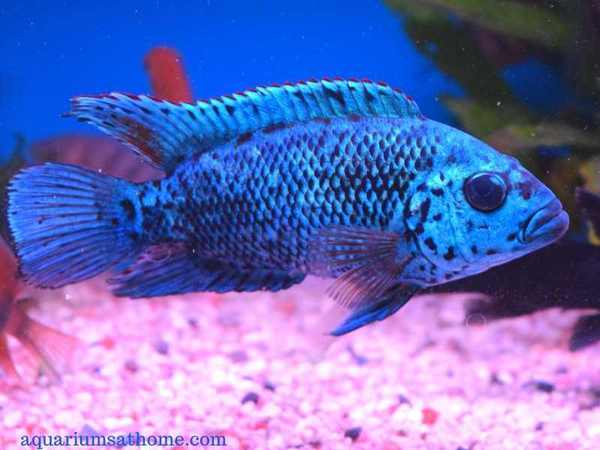
How Much Do Jack Dempsey Fish Cost
The average cost of a Jack Dempsey fish depends on the size of the fish and where you live. A juvenile can cost anywhere from $5 to $15 per fish. Purchasing this fish online may run you a bit more due to shipping fees and other incidentals. Your best bet is to buy aquarium fish locally so you can see their coloring and observe their behavior in-person.
Common Jack Dempsey Fish Diseases
Jack Dempsey fish are prone to skin flukes and other parasitic infections like protozoa. Treating the illness with formalin or praziquantel and reducing the temperature of the tank will aid in recovery. Fungal infections like cotton wool disease and bacterial infections like ich and fin rot may also occur. To prevent disease, keeping the tank clean and testing the water regularly are a must.
Jack Dempsey Fish Special Recommendations
Jack Dempsey fish have their own set of criteria when it comes to care in captivity. As a large fish, they need a big tank. Nothing less than an 80-gallon aquarium will do for a mated pair. Because they’re known for their aggressive tendencies, they require enough space in a tank to claim their own territory. For this reason, I personally suggest housing them in 100-gallon tank or larger.
This species also likes to eat and needs to be fed at least twice per day. Because they need a lot of food to sustain their large bodies, they can produce plenty of waste material which can negatively affect the water parameters. Leftover food must be removed immediately with partial water changes done bi-weekly to keep toxic ammonia levels down.
Are Jack Dempsey Fish Hardy?
Jack Dempsey fish are quite hardy and will do well in an established tank, once they’re properly acclimated, that is. Since this species grows to be big by aquarium standards, they’re messy fish and generate a lot of waste. Regular tank maintenance is vital to their overall health and longevity. Maintaining stable water parameters is of the utmost importance.
Pros and Cons of Jack Dempsey Fish
Pros
- Jack Dempsey fish are quite hardy (once properly acclimated) and can be kept in a brackish or freshwater tank.
- Jack Dempsey fish are easy to care for and not picky when it comes to food.
- Jack Dempsey fish are beautifully colored and fun to observe.
- Jack Dempsey fish like to be kept in mated pairs and breed easily in captivity.
- Jack Dempsey fish are typically peaceful in a community tank with fish of like size and temperament.
Cons
- Jack Dempsey fish grow to be quite large and require a lot of work by way of tank maintenance.
- Jack Dempsey fish have voracious appetites and need plenty of food to sustain them.
- Jack Dempsey fish can be aggressive and territorial in a community tank environment.
- Jack Dempsey fish may eat their own offspring if hungry or stressed.
- Jack Dempsey fish are messy and will uproot plants, disturb substrate, and generate a lot of waste material.
Final Thoughts
In summation, Jack Dempsey fish are a species of freshwater cichlid found in shallow, murky, sluggish rivers in Mexico and Central America. Their larger size and vivid appearance make them a favorite among aquarists and a joy to observe in captivity. Though typically peaceful in a suitable community tank environment, they can become aggressive and territorial when under stress.
I hope you’ve found this article to be both interesting and informative. I trust it’s provided you with all the information you need to maintain, breed, and raise heathy, happy Jack Dempsey. Thanks for reading and good luck with your aquarist hobby!
Recommended Posts
How to Stop Cichlid Aggression?
How to Stop Cichlids from Digging?
How to Bring Out Color in Cichlids
What Cichlids Can Live Together?
Freshwater Stingray Aquarium Setup



